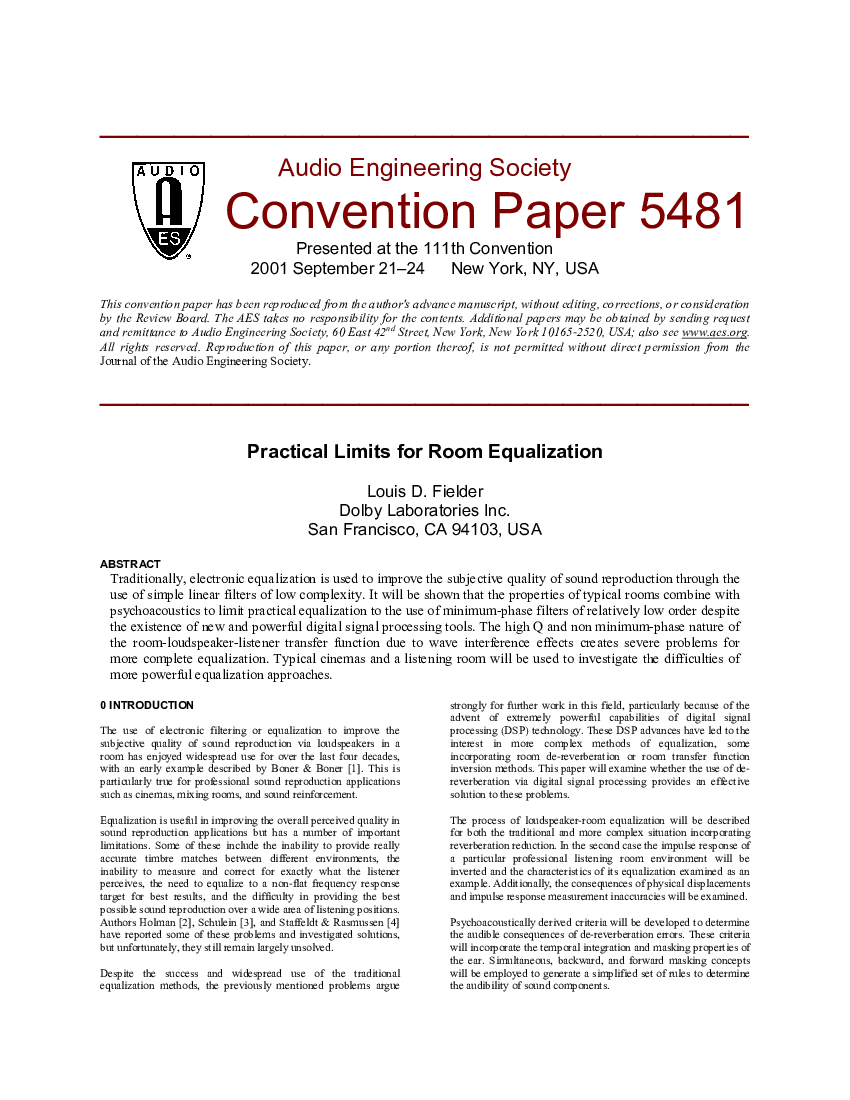Home / Publications / E-library page
You are currently logged in as an
Institutional Subscriber.
If you would like to logout,
please click on the button below.
Home / Publications / E-library page
Only AES members and Institutional Journal Subscribers can download
Traditionally, electronic equalization is used to improve the subjective quality of sound reproduction through the use of simple linear filters of low complexity. It will be shown that the properties of typical rooms combine with psychoacoustics to limit practical equalization to the use of minimum-phase filters of relatively low order despite the existence of new and powerful digital signal processing tools. The high Q and non minimum-phase nature of the room-loudspeaker-listener transfer function due to wave interference effects creates severe problems for more complete equalization. Typical cinemas and a listening room will be used to investigate the difficulties of more powerful equalization approaches.
Author (s): Fielder, Louis D.
Affiliation:
Dolby Laboratories Inc., San Francisco, CA
(See document for exact affiliation information.)
AES Convention: 111
Paper Number:5481
Publication Date:
2001-11-06
Import into BibTeX
Session subject:
Signal Processing
Permalink: https://aes2.org/publications/elibrary-page/?id=9835
(1817KB)
Click to purchase paper as a non-member or login as an AES member. If your company or school subscribes to the E-Library then switch to the institutional version. If you are not an AES member Join the AES. If you need to check your member status, login to the Member Portal.

Fielder, Louis D.; 2001; Practical Limits for Room Equalization [PDF]; Dolby Laboratories Inc., San Francisco, CA; Paper 5481; Available from: https://aes2.org/publications/elibrary-page/?id=9835
Fielder, Louis D.; Practical Limits for Room Equalization [PDF]; Dolby Laboratories Inc., San Francisco, CA; Paper 5481; 2001 Available: https://aes2.org/publications/elibrary-page/?id=9835